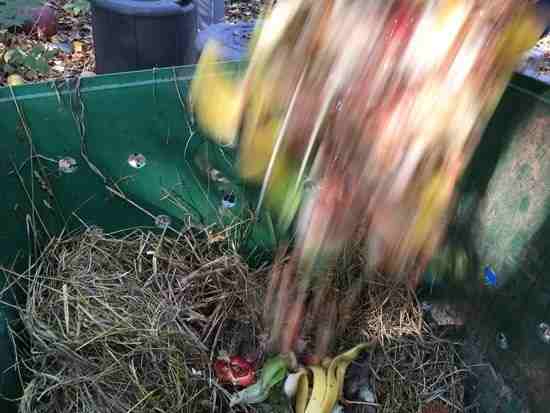
Our chickens have eaten our kitchen scraps for so long, I don’t even remember maintaining a compost pile. So when we found ourselves without chickens, I really missed the little rotten vegetable eaters. It was a good system, but now I am stuck with kitchen scraps. Scraps fill up the bucket I keep on the counter. They fill up a couple bowls I add for overflow. They get relocated to a five-gallon bucket on the porch, which attracts wasps. This is not a system. I don’t want to walk the scraps out to the garden to bury in the soil. I don’t want to dump the scraps in the woods for raccoons and skunks and my dogs to scavenge. I am certainly not throwing them into the trash. The landfill is no place for easily decomposed food. I need a new system.
I need a simple compost bin. “Composting is easy!” All the marketing for composting says so. But I’ve definitely heard people complain about it being tricky. I researched making a compost bin. Bin options range from homemade on the cheap to quite expensive. And then there is the brown-green ratio. You have to get the green and brown matters to balance for successful decomposition. Guidelines can overwhelm with tips on how to get the ratio right. They give the clear impression that the decomposition balance is tricky, either too dry and static or too stinky and composty.
Simplify your composting routine. My husband makes everything easy. If you want a complicated meal from a recipe, I’ll make dinner. If you want dinner in 15 minutes, Phil’s your guy. So when I told him I wanted to make a compost bin, he said “Just drill holes in a plastic trashcan. Then add hay or straw to cover each bucket of kitchen scraps.” That’s all there is to it, folks.
Use a plastic trash bin. We selected a plastic trash bin with an attached lid, but any plastic trashcan will work. I used a drill with a large bit to punch holes every few inches all around the bin including the bottom. You might need to bungee the top on to keep critters out. I set up my compost bin close to the house and right next to the goat paddock, where there is a steady supply of scrap hay. Every time I dump a bucket of kitchen scraps, I cover it with a big handful of hay. Sure enough, as soon as it started to fill up, it started to shrink down.
Have a hay bale on hand. Then I realized the key to easy composting: get a hay bale. You need that convenient source of the brown ingredients to layer between every dump of kitchen scraps. Brown ingredients can be dried leaves, branches, hay, straw, shredded paper, but let’s keep this easy. It is hard to find the browns, especially in a tidy suburban yard. Dry leaves are plentiful in the fall, but the rest of the year one could spend too much time scrounging around for these brown elements. You might not have hay scraps, but I would go so far as to recommend this, even to suburban composters: buy a square bale of hay or straw to set next to your compost bucket. After every kitchen scrap offering, cover it with a generous layer of hay. Fully covering the scraps every time will keep them from having an odor or attracting animals. Worth it.
Take it from Phil and keep it simple. Punch holes in a plastic trashcan and add layers of scraps and hay. It’s as simple as that, to spin straw into garden gold.
written by Ilene White Freedman for Mother Earth News published on 10/8/2019
